Last week we looked at undergraduate enrolment. Today, I want to look at a slightly more complicated story; namely, changes over time in apprenticeship enrolments.
Figure 1 shows a well-known story about apprenticeships. This country had a long construction boom starting just before the turn of the century driven in large part by the super-cycle in commodities prices (mainly oil and gas) through to the first half of last decade. Then, as we all know, oil prices fell, meaning that new exploration, new pits, and new rigs all ceased to be built, hence less demand for industrial construction. From 1997 to 2013, the number of registered apprentices rose by 174% to nearly 470,000; since then, they have fallen by 19% to a bit over 380,000. In other words, about what you’d expect.
Figure 1: Total Apprenticeship Registrations, Canada, 1997-2020
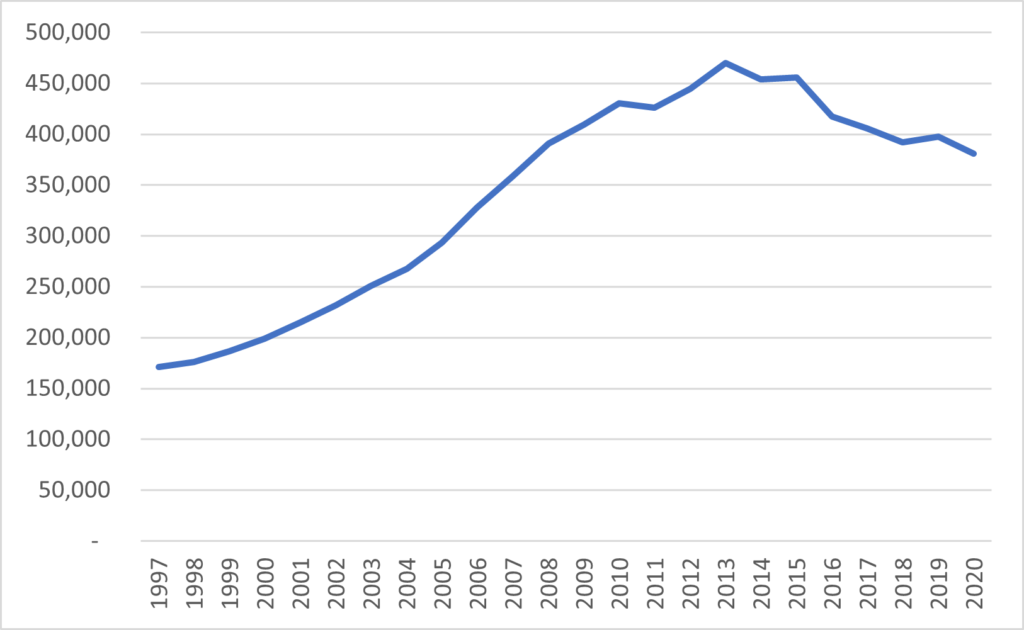
But, this is Canada, and it’s always wise to look under the hood because usually a national average hides a more complicated story. Let’s break this down by province. Since the top of the boom in 2013, we’ve lost roughly 90,000 apprentices, but these losses have by no means been evenly distributed across the country. Figure 2 shows changes by province in absolute terms, while figure 3 shows it in percentage terms.
Figure 2: Change in Apprenticeship Registrations, 2013-2020, by Province
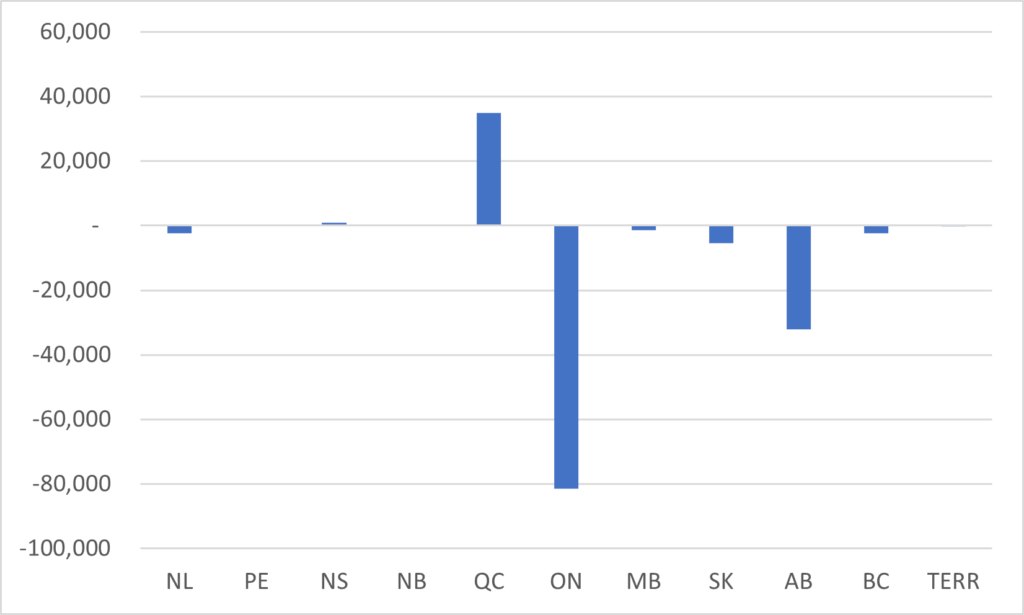
Figure 3: Percentage Change in Apprenticeship Registrations, 2013-2020, by Province
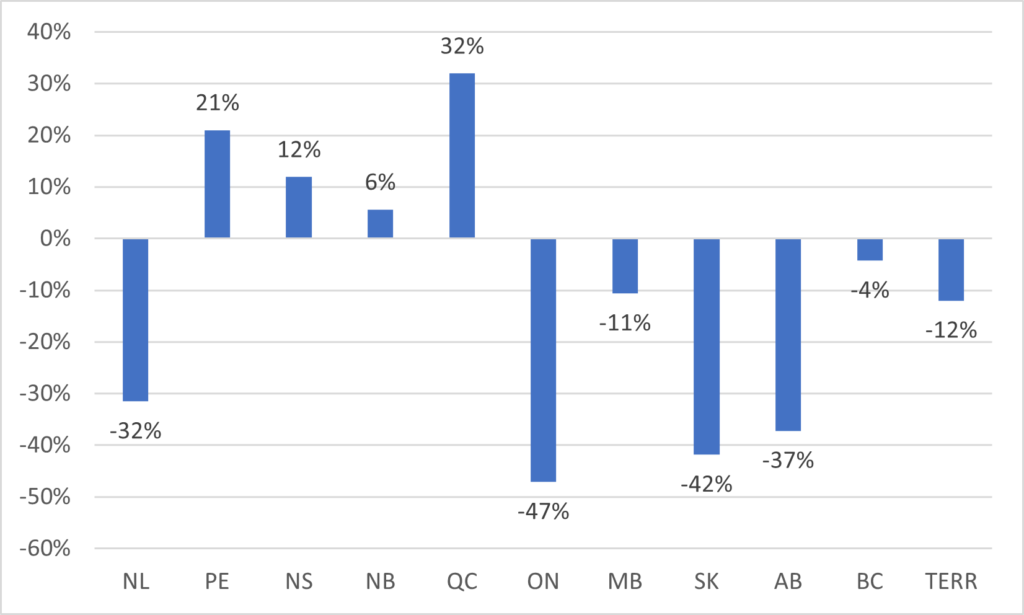
So, the expected story here – that the drop in oil prices drove big drops in apprentice numbers in Newfoundland and Labrador, Saskatchewan and Alberta – turns out to be true. But there are two big surprises here. First, apprenticeship numbers actually rose substantially in the Maritimes and Quebec. And second, that the biggest drop of all was in Ontario.
What is going on here? Before we get to that, let’s take a look at changes in national apprenticeship numbers by major trade area. There are a lot of trade areas – too many to plot them all properly, so I’ll restrict the sample to those with more than 10,000 registered apprentices in 2013. As before, figure 4 shows the absolute change in apprenticeship numbers, while figure 5 shows the percentage drop. Construction trades have an asterisk.
Figure 4: Declines in Apprenticeship Registrations, 2013-2020, by Major Trade.

Figure 5: Percentage Decline in Apprenticeship Registrations, 2013-2020, by Major Trade

A couple of things stand out here. First, almost every single major trade has fallen since 2013, not just the construction trades (a couple of small-ish trades, most notably power plant operators and refrigeration/air conditioning mechanics, are the exceptions to this rule). Second, while some construction trades like welders were hit extremely hard, carpenters, electricians, and plumbers saw their numbers fall by less than the overall average, presumably because residential construction softened the drop. And third: user support technicians? What the hell?
Turns out that back in the day, several call centre operators got wise to the idea that if they classified all their employees as apprentices, they could access the Ontario Apprenticeship Tax Credit and get the government to pay something like a third of their wages. Ontario colleges (bless them, they never miss an opportunity) went along with this and started creating training programs for call centre workers. Then in 2013, the Ontario government finally got wise and excluded this “trade” from the credit, at which point call centre operators decided that apprenticeships weren’t necessary in their sector, and numbers collapsed.
On its own, this accounts for a little over a third of the overall drop in apprenticeship numbers in Ontario since 2013. And this is not the only instance where deliberate Ontario government policy reduced apprenticeship numbers. Another seven thousand spots were eliminated in the “Early Childhood Educators” and “Community and Social Service Workers” trades, as the government decided there were better ways to train these workers than through apprenticeships. Hairstylists and estheticians accounted for another loss of six thousand apprenticeships. Add in those three “pink collar” trades to the call centre trades and you’re on your way to explaining about half the drop in Ontario. In other words, absent these four trades – three of which were only ever offered in Ontario anyway – the drop in Ontario apprenticeships is only about half the size it appeared to be in figures 2 and 3: still significant, but not jaw-droppingly so.
Two final pieces of data, looking specifically at sex and age. Canadian apprenticeships have always been male-dominated in a way that is true in few other countries, mainly because they are concentrated in construction trades. As figure 6 shows, the recent drop in apprenticeship numbers fell disproportionately on women, whose share of registered apprenticeship spots fell from 14% in to just under 12% between 2013 and 2020, in large part because of what happened in Ontario. For comparison, in Germany, the female share of apprentices is around 40%, mainly because their conception of apprenticeable trades is considerably broader than ours.
Figure 6: Women’s Share of Total Apprenticeships, Canada, 1997-2020
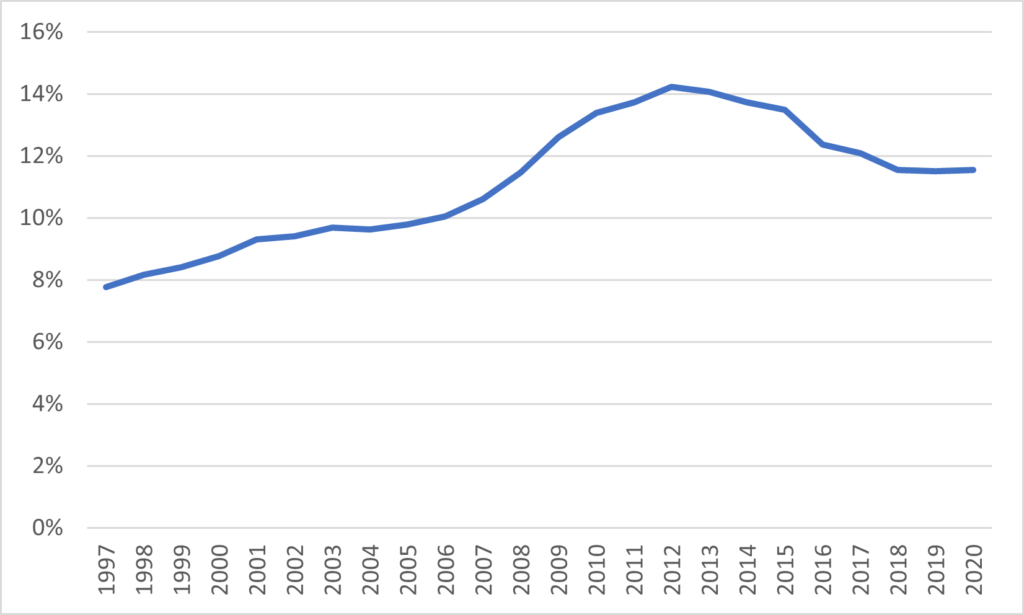
And finally, Figure 7 shows the change in registrations since 2013 divided by age. Turns out there has been no drop at all among older age groups: the drop fell almost exclusively on the under-25s. I suspect that what this reflects is that in tougher times, employers are simply less likely to want to put the effort into training young people. But whatever the reason, it suggests that there will be a significant demographic gap for trades workers in about fifteen years, no doubt accompanied by a mix of industry complaints about government inaction and wailing for subsidies.
Figure 7: Change in Apprenticeship Registrations by Age, 2013 to 2020
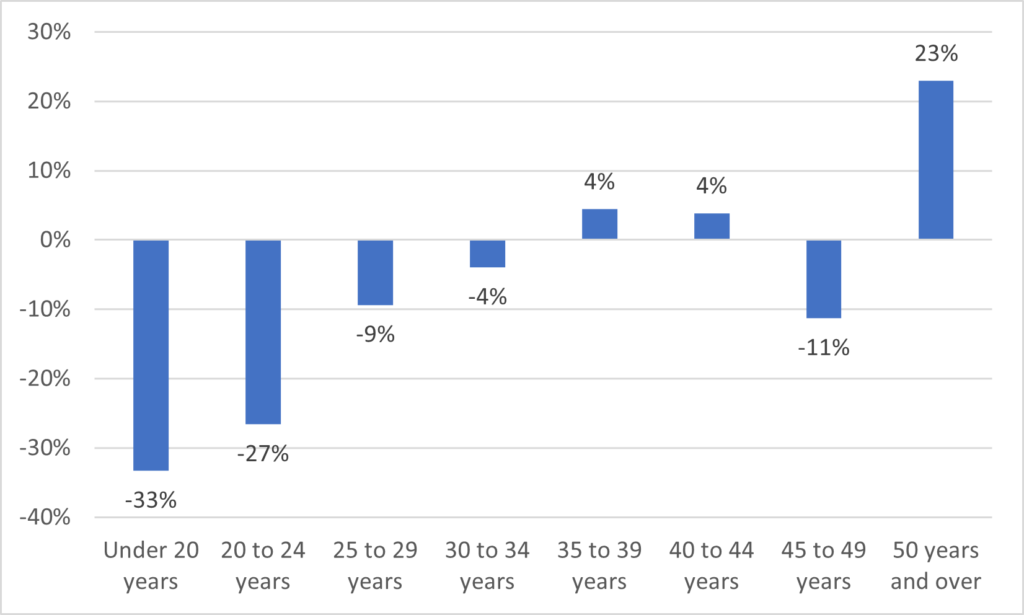
In sum: Apprenticeship registrations are falling a lot in Alberta, Saskatchewan, and Newfoundland and Labrador for oil-price-related reasons, and in Ontario for a bunch of sui generis reasons but are also growing strongly in other provinces, notably Quebec. As the apprentice population shrinks, its demographic profile is shifting older and (even) more male.

 Tweet this post
Tweet this post
